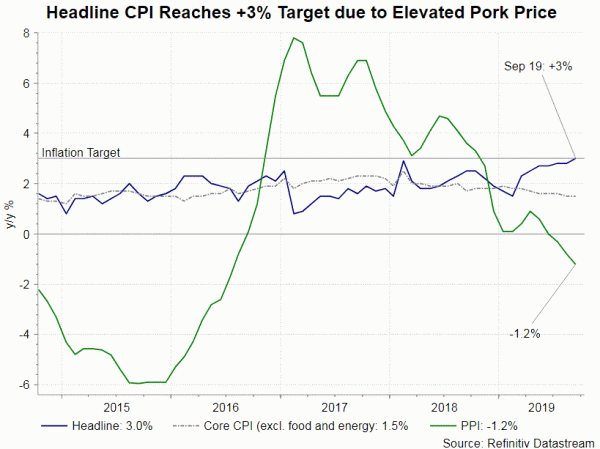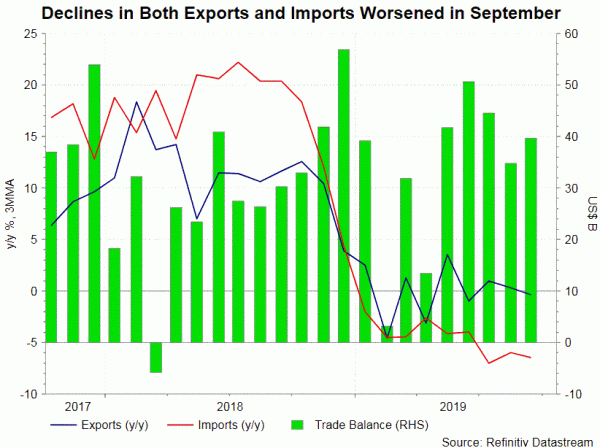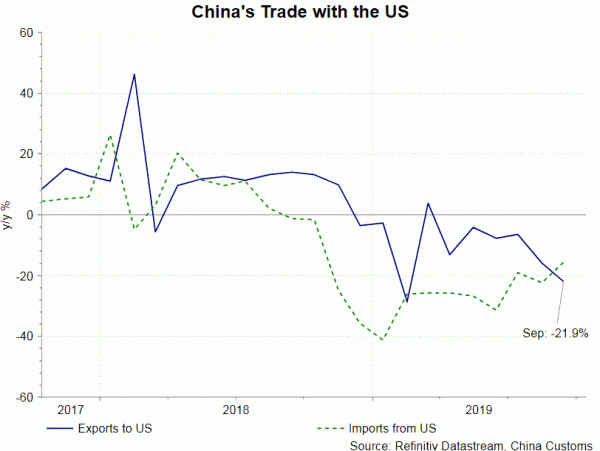Headline CPI in China rose to +3% y/y in September, reaching PBOC’s target for first time since December 2013. However, this was driven by elevated pork price rather than improvement in household spending. Food price jumped +11.2%, accelerating from +10% in August. This was predominantly driven by pork price which soared +69.3% y/y in September. This is compared with a +46.7% increase in the prior month. Non-food CPI added only +1%, easing from +1.1% in August. Core CPI, excluding food and energy, steadied at +1.5% yoy. PPI contracted to -1.2% y/y in September. Upstream deflation deepened as trade war continues.
With no signs of pork supply returning to normal in the near-term, we expect headline inflation should remain elevated. PBOC would face a dilemma in its monetary policy. While the subdued core inflation and growth outlook support further monetary easing, such move could send headline inflation higher. Although China is a highly censored regime with poor human rights records, the government still has to manage the livelihood of the people so that their dissatisfaction would evolve into protests or something that could threaten the legitimacy of the regime.
Trade surplus widened to US$ 39.7B in September, from US$ +34.8B a month ago. However, this was not driven by improvement in China’s international trade. Indeed, decline in both exports and imports worsened during the month. Exports contracted -3.2% y/y in September, worse than consensus of -2.9% and -1% in August. Imports slumped -8.5% y/y, compared with consensus of -6% and August’s -5.6%.
As far as the trade war is concerned, shipment to the US tumbled -21.9% y/y in September, compared with -16% in August. This was the first reading since US’ 15% tariffs imposed on around US$ 125B Chinese exports took effect on September 1. Exports to Japan contracted -5% in September after a rebound in August. Exports to the EU and ASEAN gained +0.1% and +9.7% , respectively. However, growth in both regions decelerated. Imports of crude oil contracted -7% y/y in September, worsening from -3.5% in August. Imports of copper plummeted -18.6%, following a -10% decline in August. Imports of iron ore rose +55.8%. Yet, this marks a slowdown from +80.6% in August.
The weak momentum of Chinese exports surprised to the downside. Despite some positive signal about trade negotiation with the US, we refrain from being too optimistic. In fact, it is still likely that the additional 15% tariff would takes place as scheduled on December 15, although Trump might announce a delay until early 2020.
















